
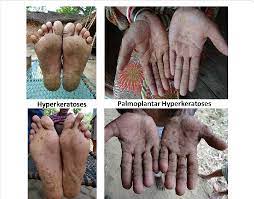 We're for all- ALL are for us for the greater interest of Humanism-Truth-Facts-Friendship-Unity-Participation including Physico-Mental Sound Health with Spirituality, enrichment through ''TOTAL HEALTH SOLUTION'' to a Well-furnished GOALofTruth alloted for all in real sense ;
We're for all- ALL are for us for the greater interest of Humanism-Truth-Facts-Friendship-Unity-Participation including Physico-Mental Sound Health with Spirituality, enrichment through ''TOTAL HEALTH SOLUTION'' to a Well-furnished GOALofTruth alloted for all in real sense ;
From wikipedia & other reliable sources ( Poets, Writers, Thinkers, Researchers, Free Lancers, Philosophers, Theologists, Scientists, Orators, Sociologists and Photographers +Artists-Musicians & etc.) we can learn as follows :
Arsenic poisoning is a medical condition that occurs due to elevated levels of arsenic in the body.[6] If arsenic poisoning occurs over a brief period of time, symptoms may include vomiting, abdominal pain, encephalopathy, and watery diarrhea that contains blood.[3] Long-term exposure can result in thickening of the skin, darker skin, abdominal pain, diarrhea, heart disease, numbness, and cancer.[3]
The most common reason for long-term exposure is contaminated drinking water.[5] Groundwater most often becomes contaminated naturally; however, contamination may also occur from mining or agriculture.[3] It may also be found in the soil and air.[7] Recommended levels in water are less than 10–50 µg/L (10–50 parts per billion).[3] Other routes of exposure include toxic waste sites and traditional medicines.[3][5] Most cases of poisoning are accidental.[3] Arsenic acts by changing the functioning of around 200 enzymes.[3] Diagnosis is by testing the urine, blood, or hair.[3]
Prevention is by using water that does not contain high levels of arsenic.[3] This may be achieved by the use of special filters or using rainwater.[3] There is not good evidence to support specific treatments for long-term poisoning.[3] For acute poisonings treating dehydration is important.[6] Dimercaptosuccinic acid or dimercaptopropane sulfonate may be used while dimercaprol (BAL) is not recommended.[4] Hemodialysis may also be used.[6]
Through drinking water, more than 200 million people globally are exposed to higher-than-safe levels of arsenic.[5] The areas most affected are Bangladesh and West Bengal.[5] Exposure is also more common in people of low income and minorities.[8] Acute poisoning is uncommon.[5] The toxicity of arsenic has been described as far back as 1500 BC in the Ebers papyrus.[9]
Arsenic increases the risk of cancer.[22] Exposure is related to skin, lung, liver, and kidney cancer among others.[3]
Its comutagenic effects may be explained by interference with base and nucleotide excision repair, eventually through interaction with zinc finger structures.[23] Dimethylarsinic acid, DMA(V), caused DNA single strand breaks resulting from inhibition of repair enzymes at levels of 5 to 100 mM in human epithelial type II cells.[24][25]
MMA(III) and DMA(III) were also shown to be directly genotoxic by effectuating scissions in supercoiled ΦX174 DNA.[26] Increased arsenic exposure is associated with an increased frequency of chromosomal aberrations,[27] micronuclei[28][29] and sister-chromatid exchanges. An explanation for chromosomal aberrations is the sensitivity of the protein tubulin and the mitotic spindle to arsenic. Histological observations confirm effects on cellular integrity, shape and locomotion.[30]
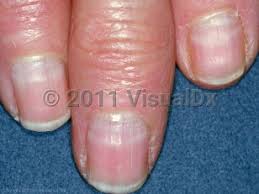

DMA(III) is able to form reactive oxygen species by reaction with molecular oxygen. Resulting metabolites are the dimethylarsenic radical and the dimethylarsenic peroxyl radical.[31] Both DMA(III) and DMA(V) were shown to release iron from horse spleen as well as from human liver ferritin if ascorbic acid was administered simultaneously. Thus, formation of reactive oxygen species can be promoted.[32] Moreover, arsenic could cause oxidative stress by depleting the cell's antioxidants, especially the ones containing thiol groups. The accumulation of reactive oxygen species like that cited above and hydroxyl radicals, superoxide radicals and hydrogen peroxides causes aberrant gene expression at low concentrations and lesions of lipids, proteins and DNA in higher concentrations which eventually lead to cellular death. In a rat animal model, urine levels of 8-hydroxy-2'-deoxyguanosine (as a biomarker of DNA damage byreactive oxygen species) were measured after treatment with DMA(V). In comparison to control levels, they turned out to be significantly increased.[33] This theory is further supported by a cross-sectional study which found elevated mean serum lipid peroxides in the As exposed individuals which correlated with blood levels of inorganic arsenic and methylated metabolites and inversely correlated with nonprotein sulfhydryl (NPSH) levels in whole blood.[34] Another study found an association of As levels in whole blood with the level of reactive oxidants in plasma and an inverse relationship with plasma antioxidants.[35] A finding of the latter study indicates that methylation might in fact be a detoxification pathway with regard to oxidative stress: the results showed that the lower the As methylation capacity was, the lower the level of plasma antioxidant capacity. As reviewed by Kitchin (2001), the oxidative stress theory provides an explanation for the preferred tumor sites connected with arsenic exposure.[36] Considering that a high partial pressure of oxygen is present in lungs and DMA(III) is excreted in gaseous state via the lungs, this seems to be a plausible mechanism for special vulnerability. The fact that DMA is produced by methylation in the liver, excreted via the kidneys and later on stored in the bladder accounts for the other tumor localizations.
Arsenic interferes with cellular longevity by allosteric inhibition of an essential metabolic enzyme pyruvate dehydrogenase complex, which catalyzes the oxidation of pyruvate to acetyl-CoA by NAD+. With the enzyme inhibited, the energy system of the cell is disrupted resulting in cellular apoptosis. Biochemically, arsenic prevents use of thiamine resulting in a clinical picture resembling thiamine deficiency. Poisoning with arsenic can raise lactate levels and lead to lactic acidosis. Low potassium levels in the cells increases the risk of experiencing a life-threatening heart rhythm problem from arsenic trioxide.[citation needed] Arsenic in cells clearly stimulates the production of hydrogen peroxide (H2O2). When the H2O2 reacts with certain metals such as iron or manganese it produces a highly reactive hydroxyl radical. Inorganic arsenic trioxide found in ground water particularly affects voltage-gated potassium channels,[88] disrupting cellular electrolytic function resulting in neurological disturbances, cardiovascular episodes such as prolonged QT interval, neutropenia, high blood pressure,[89] central nervous system dysfunction, anemia, and death.


In the United States, Schoof et al. estimated an average adult intake of 3.2 μg/day, with a range of 1–20 μg/day.[67] Estimates for children were similar.[68] Food also contains many organic arsenic compounds. The key organic arsenic compounds that can be routinely found in food (depending on food type) include monomethylarsonic acid (MMAsV), dimethylarsinic acid (DMAsV), arsenobetaine, arsenocholine, arsenosugars, and arsenolipids. DMAsV or MMAsV can be found in various types of fin fish, crabs, and mollusks, but often at very low levels.[69]
Arsenobetaine is the major form of arsenic in marine animals, and, by all accounts, it is considered a compound that is nontoxic under conditions of human consumption. Arsenocholine, which is mainly found in shrimp, is chemically similar to arsenobetaine, and is considered to be "essentially nontoxic".[70] Although arsenobetaine is little studied, available information indicates it is not mutagenic, immunotoxic, or embryotoxic.[71]
Arsenosugars and arsenolipids have recently been identified. Exposure to these compounds and toxicological implications are currently being studied. Arsenosugars are detected mainly in seaweed but are also found to a lesser extent in marine mollusks.[72] Studies addressing arsenosugar toxicity, however, have largely been limited to in vitro studies, which show that arsenosugars are significantly less toxic than both inorganic arsenic and trivalent methylated arsenic metabolites.[73]
It has been found that rice is particularly susceptible to accumulation of arsenic from soil.[74] Rice grown in the United States has an average 260 ppb of arsenic, according to a study; but U.S. arsenic intake remains far below World Health Organization-recommended limits.[75] China has set a standard for arsenic limits in food (150 ppb),[76] as levels in rice exceed those in water.[77]
Arsenic is a ubiquitous element present in American drinking water.[78] In the United States, levels of arsenic that are above natural levels, but still well below danger levels set in federal safety standards, have been detected in commercially raised chickens.[79] The source of the arsenic appears to be the feed additives roxarsone and nitarsone, which are used to control the parasitic infection coccidiosis as well as to increase weight and skin coloring of the poultry.[80][81]
High levels of inorganic arsenic were reportedly found in 83 California wines in 2015.[82]
Arsenic interferes with cellular longevity by allosteric inhibition of an essential metabolic enzyme pyruvate dehydrogenase complex, which catalyzes the oxidation of pyruvate to acetyl-CoA by NAD+. With the enzyme inhibited, the energy system of the cell is disrupted resulting in cellular apoptosis. Biochemically, arsenic prevents use of thiamine resulting in a clinical picture resembling thiamine deficiency. Poisoning with arsenic can raise lactate levels and lead to lactic acidosis. Low potassium levels in the cells increases the risk of experiencing a life-threatening heart rhythm problem from arsenic trioxide.[citation needed] Arsenic in cells clearly stimulates the production of hydrogen peroxide (H2O2). When the H2O2 reacts with certain metals such as iron or manganese it produces a highly reactive hydroxyl radical. Inorganic arsenic trioxide found in ground water particularly affects voltage-gated potassium channels,[88] disrupting cellular electrolytic function resulting in neurological disturbances, cardiovascular episodes such as prolonged QT interval, neutropenia, high blood pressure,[89] central nervous system dysfunction, anemia, and death.
Arsenic exposure plays a key role in the pathogenesis of vascular endothelial dysfunction as it inactivates endothelial nitric oxide synthase, leading to reduction in the generation and bioavailability of nitric oxide. In addition, the chronic arsenic exposure induces high oxidative stress, which may affect the structure and function of cardiovascular system. Further, the arsenic exposure has been noted to induce atherosclerosis by increasing the platelet aggregation and reducing fibrinolysis. Moreover, arsenic exposure may cause arrhythmia by increasing the QT interval and accelerating the cellular calcium overload. The chronic exposure to arsenic upregulates the expression of tumor necrosis factor-α, interleukin-1, vascular cell adhesion molecule and vascular endothelial growth factor to induce cardiovascular pathogenesis.
Arsenite inhibits not only the formation of acetyl-CoA but also the enzyme succinic dehydrogenase. Arsenate can replace phosphate in many reactions. It is able to form Glc-6-arsenate in vitro; therefore it has been argued that hexokinase could be inhibited.[93] (Eventually this may be a mechanism leading to muscle weakness in chronic arsenic poisoning.) In the glyceraldehyde 3-phosphate dehydrogenase reaction arsenate attacks the enzyme-bound thioester. The formed 1-arseno-3-phosphoglycerate is unstable and hydrolyzes spontaneously. Thus, ATP formation in glycolysis is inhibited while bypassing the phosphoglycerate kinase reaction. (Moreover, the formation of 2,3-bisphosphoglycerate in erythrocytes might be affected, followed by a higher oxygen affinity of hemoglobin and subsequently enhanced cyanosis.) As shown by Gresser (1981), submitochondrial particles synthesize adenosine-5'-diphosphate-arsenate from ADP and arsenate in presence of succinate. Thus, by a variety of mechanisms arsenate leads to an impairment of cell respiration and subsequently diminished ATP formation.[94] This is consistent with observed ATP depletion of exposed cells and histopathological findings of mitochondrial and cell swelling, glycogen depletion in liver cells and fatty change in liver, heart and kidney.
Experiments demonstrated enhanced arterial thrombosis in a rat animal model, elevations of serotonin levels, thromboxane A[2] and adhesion proteins in platelets, while human platelets showed similar responses.[95] The effect on vascular endothelium may eventually be mediated by the arsenic-induced formation of nitric oxide. It was demonstrated that +3 As concentrations substantially lower than concentrations required for inhibition of the lysosomal protease cathepsin L in B cell line TA3 were sufficient to trigger apoptosis in the same B cell line, while the latter could be a mechanism mediating immunosuppressive effects.[96]
COMMENTS FROM Dr. P. C. Majumder (- Author. Writer, Humanist, Physician (Physico-Mental & Spiritual) and Cosmopolitan Researcher in favor of ALL-CREATION Universally RESIDE++++ in positive ways for universal UNITY & LOVE++++) as follows:
1.
2.
3. 4. 5. 6. 7. 8. 8. 9. 10.
We're for all- ALL are for us for the greater interest of Humanism-Truth-Facts-Friendship-Unity-Participation to a Well-furnished GOAL of Truth from which all shall have ++++;
We're indebted to WIKIPEDIA +WHO for a short while and as 'Guardian QUOTATION' from Global WISER ONE. And have quoted many images, article's, writings etc. by great & humanist writers+++ from global thinkers, Well-wishers, Wiseman, Humanists and Others Living-Nonlivings in favor of HUMANISM to share more answers of Researchers-readers+++++....
To reach the 'GOAL of FULFILNESS' unitedly to alive in the "DESTINATION of TRUTH-FACTS-CHARMEST AMICABLITY" of Natural Joyful POSSIBILITIES+++
BREAST CANCER, TUMOR, Arsenic+Chemical Poisoning, Corona, Heart-Lung diseases, Neurological-Hormonal-Immunal-Infectious diseases with related complexities are possible to cure properly-easily-scientifically-accurately (100%) by our positive medical services only with+++++balance confirming
Medicine-Food control-proper nursing-medicinal massage-Medicinal Yogas- Meditation, Physiotherapy special etc. without side effects & Repeatation as per contract through user-friendly approved ways of CURE++++. please fill our form as below or click:
After confirming contract-letter between you+++. We serve you properly with no Chemo-therapy-radiation therapy -SURGICAL Complexities (Physical-Mental) to CURE+++ upto our Limit to recover your both-health from illness.





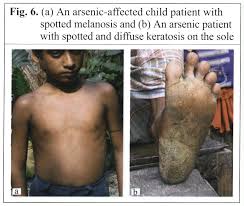














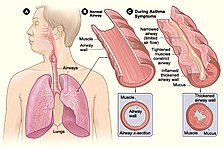
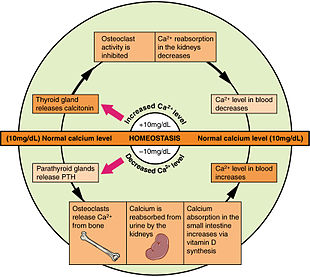
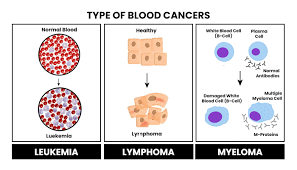









Comments (0)